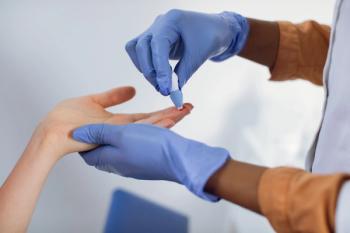
Co-Infection of HIV and Monkeypox Is Common
About 40% of people monkeypox also had HIV, according to a CDC study that included almost 2000 monkeypox cases in the United States that occurred during the first 2 months of the outbreak.
Researcher at the U.S. Centers for Disease Control and Prevention (CDC) found an association between among
In
Lead author Kathryn G. Curran, Ph.D., and a large team of fellow researchers noted, though, that that people with established connections to HIV and sexual healthcare services are probably more likely to recognize monkeypox symptoms and seek care.
“Persons with monkeypox signs and symptoms who are not engaged in routine HIV or sexual health care, or who experience milder signs and symptoms, might be less likely to have their monkeypox virus infection diagnosed,” said
The association between HIV and monkeypox is not limited to the U.S. World Health Organization data show that around the world, nearly 45% of reported monkeypox cases have been found in those living with HIV.
Monkeypox and HIV both spread through sexual contact, and most prevalent among various networks of gay, bisexual and other men who have sex with men.
The research findings reported in MMWR also show that 41% of the people with monkeypox have a history of other sexually transmitted infections, including chlamydia, gonorrhea or syphilis.
Among the cases of monkeypox patients without HIV, 67% reported use of HIV preexposure prophylaxis (PrEP).
Another finding was that 8% of those co-infected monkeypox and HIV were hospitalized compared 3% without HIV. The study authors said the difference may be a matter of doctors being extra cautious with patients with both monkeypox and HIV.
The CDC investigators suggested public health officials utilize systems of administering HIV care to reduce monkeypox incidence in vulnerable populations.
Newsletter
Pharmacy practice is always changing. Stay ahead of the curve with the Drug Topics newsletter and get the latest drug information, industry trends, and patient care tips.



























































































































































